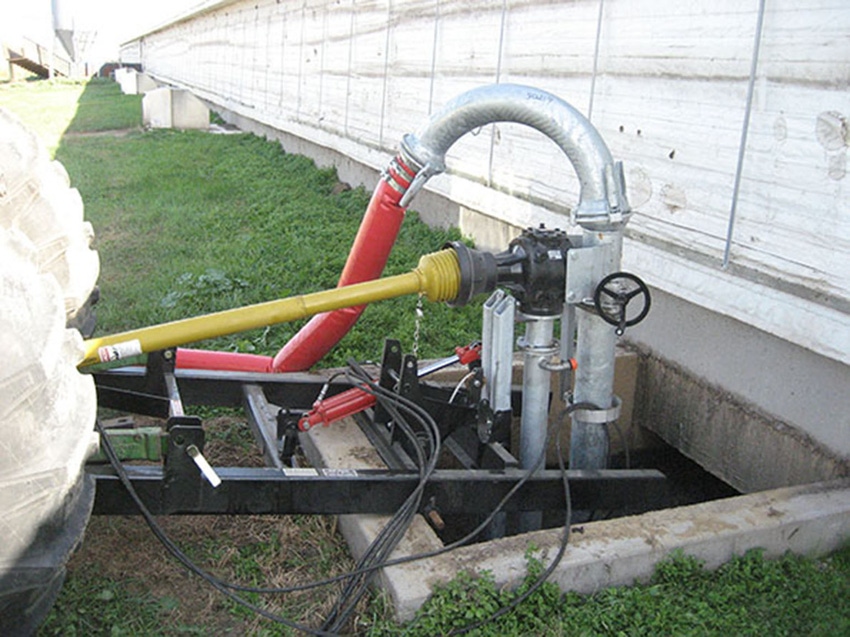Where there’s gas, there's risk
Hog Outlook: Manure gases make for dangerous environments.

A calm Friday morning turned hectic with calls wondering where all the excitement was. My brother called and said that he was meeting multiple firetrucks and rescue squad units that were pulling down my road.
They didn't make it to our place, but another town's firetrucks did come by from the west, so we figured something happened between our place and the main highway.
What happened was at a pair of hog barns about a mile as the crow flies from our place. There were a lot of emergency units, a lot of flashing lights, but nothing else. Well, at least nothing else to be seen from the nearest road.
A crew was working in one of the empty hog barns, doing repairs to gates and whatnot. One of the workers was using a grinder on one of the gates when the sparks met gases from the deep pit manure underneath the barn.
Stories with that introduction usually don't end well. Usually, when sparks from a grinder or the pilot light from a power washer or heater meet the manure gases, there is a fire — if not an explosion.
This Friday morning there was a ball of fire, but fortunately that was it. The barn didn't burn. Thank God no one was hurt. Maybe shook, but not hurt. Lucky, yes, but not hurt.
I have written stories on pig farmers who were not as lucky. Barns were lost, skin was lost, hogs were lost.
This latest is a story of luck, but it also serves a good reminder to hog producers when manure gases are involved.
The Pork Checkoff has a good set of primers for staying safe around manure and the gases produced: hydrogen sulfide, methane, ammonia and carbon dioxide. Each of these gases, if in high enough concentrations, may be harmful and even cause death. Safety should always be a priority, but even more so when handling manure in a pit or lagoon.
The Pork Checkoff suggests five main considerations when handling manure:
Monitor air quality. While pumping and agitating manure, air quality should be monitored. Consider purchasing a hydrogen sulfide gas monitor for anyone who will be near the area where manure is being pumped. In addition, stay alert for signs of gas exposure — including, but not limited to, irritation to the eyes, nose and throat; dizziness; and nausea.
Properly ventilate barns. Before pumping manure, fully open all ventilation curtains and run ventilation fans at maximum speed. Continue maximum ventilation for at least 30 minutes after pumping is completed. Ensure all people are out of the barn and tag all doors noting the barn is unsafe for entry during agitation and pumping. No one should enter a building where manure is being pumped and agitated.
Follow confined space entry protocol. According to the Occupational Safety and Health Administration, many manure handling and storage facilities are considered a confined space. Never enter a manure storage facility unless someone is standing by and maintaining constant contact with the person in the confined space. Gas levels should be measured before entry and monitored continuously when in the confined space. Always wear a properly fitted harness that is attached to a rescue tripod.
Reduce risk of fire. Flash fires can happen when agitating and pumping manure. Reduce the risk by not allowing smoking or open flames near the area where manure is being handled. In addition, turn off electrical power to any non-ventilation equipment and extinguish any pilot lights or other ignition sources in the building.
Avoid temptation to rescue. If someone is overcome by gas exposure, do not enter the area to rescue them. Follow the farm's emergency action plan and call 911 immediately for rescue assistance.
In the scenario spelled out above, the barn was empty of hogs, and manure was not being pumped, further instilling the importance of safety whenever manure gases may be present.
Manure handling should be a part of every producer's emergency action plan, and this plan should be reviewed regularly and updated when necessary. These plans should also be shared with any manure handling contractors.
Not all spark-manure gas encounters can have a lucky ending, so it is best to hone up your safety steps to do the best to prevent such events.
Schulz, editor of The Farmer, grew up on the family hog farm in southern Minnesota, before a career in ag journalism, including National Hog Farmer.
About the Author(s)
You May Also Like



